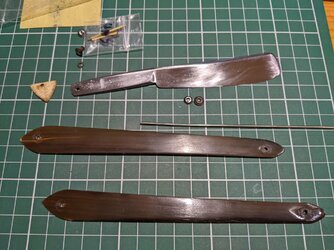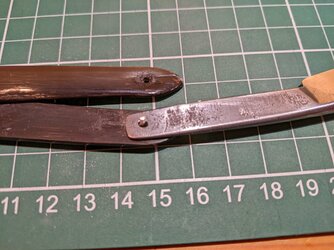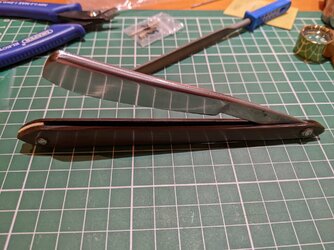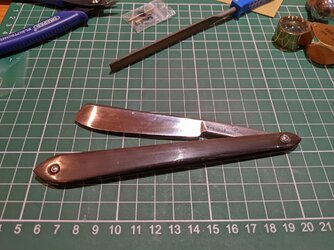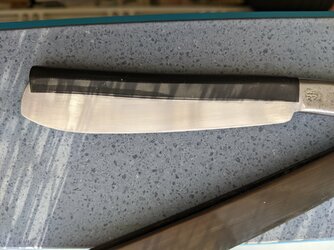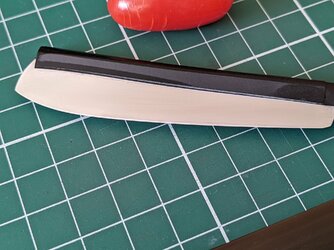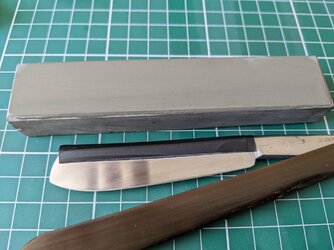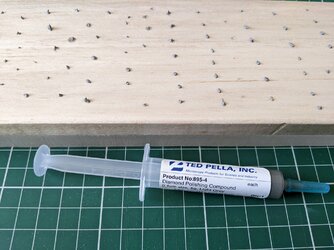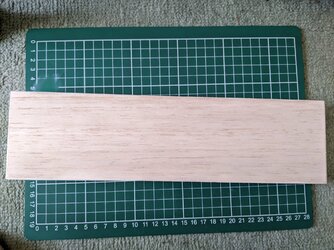Happy new year everyone.
So I picked up some ancient French razors and restored one over the Christmas period.
The French seller described this one as "A PARIS BREVETE" but I've not had much luck in finding out more about it.
If anyone knows any background info post it here.
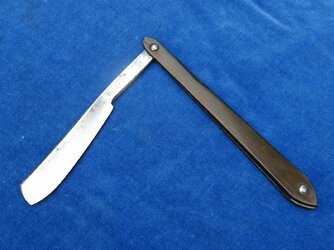
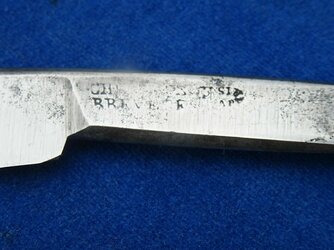
I can see CH? (Charles?) Brevete on the tang and "A PARIS" where the PARIS is in a circle (RIS part of Paris is goes upside down.
The horn scales are cracked at the "showside" pivot pin enough so that it flops around a bit.
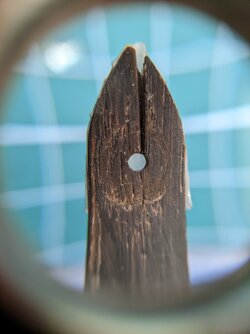
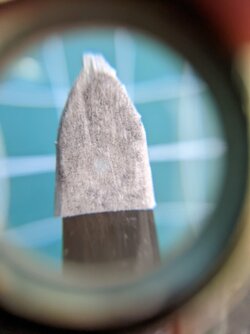
The crack in the scales is bad enough that it'll never bear the weight of this hefty near wedge blade so that'll need to be fixed.
I taped the other side to make a receptacle for some baking soda.
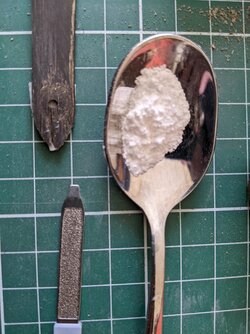
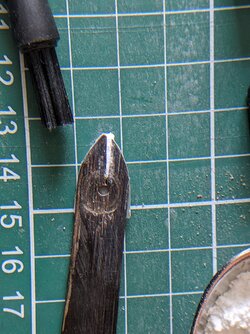
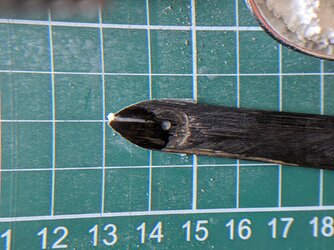
Packed as much as I could get in there and super glued it which will make it stronger than when it was just horn.
So I picked up some ancient French razors and restored one over the Christmas period.
The French seller described this one as "A PARIS BREVETE" but I've not had much luck in finding out more about it.
If anyone knows any background info post it here.


I can see CH? (Charles?) Brevete on the tang and "A PARIS" where the PARIS is in a circle (RIS part of Paris is goes upside down.
The horn scales are cracked at the "showside" pivot pin enough so that it flops around a bit.


The crack in the scales is bad enough that it'll never bear the weight of this hefty near wedge blade so that'll need to be fixed.
I taped the other side to make a receptacle for some baking soda.



Packed as much as I could get in there and super glued it which will make it stronger than when it was just horn.
